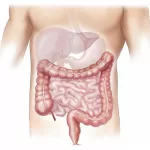A new study has found that smoking and high-intensity smoking are significantly associated with cryptogenic ischemic stroke (CIS) among young adults aged 18 to 45 years. The study, published online on Feb. 19 in Neurology Open Access, provides compelling evidence linking tobacco use to increased stroke risk in younger populations.
Study Findings
The research, led by Phillip Ferdinand, M.B.Ch.B., from University Hospitals of North Midlands NHS Trust in the United Kingdom, recruited patients aged 18 to 49 years who had experienced CIS within two weeks of symptom onset. The study involved participants from 19 European stroke centers and sought to analyze the relationship between smoking and young CIS.
The analysis included 546 young CIS patients along with a control group. Researchers identified a significant difference between the patients and controls concerning several risk factors, including low education status, hypertension, obesity, physical inactivity, smoking, and heavy alcohol use.
Increased Risk Across Age Groups
After adjusting for known risk factors, the study found that smoking was associated with a higher likelihood of young CIS, with an overall odds ratio (OR) of 2.39. The risk was even more pronounced in men (OR: 3.34) and was highest in the 45- to 49-year-old age group (OR: 3.77). Notably, individuals with more than 20 pack-years of smoking history had the highest risk (OR: 4.30), particularly men in the older subgroup.
Significance of Findings
“We found a clear association between smoking and CIS in the young even after adjustment for low education status and well-known vascular risk factors,” the authors stated. They further noted that while the association was strong in men, it was not statistically significant in women.
These findings reinforce the urgent need for targeted smoking cessation programs aimed at young adults to mitigate the risk of cryptogenic ischemic strokes. Public health experts emphasize that reducing tobacco consumption could play a crucial role in lowering stroke incidence among younger demographics.
Disclaimer
This article is for informational purposes only and does not constitute medical advice. Readers are encouraged to consult healthcare professionals for personalized medical guidance regarding stroke prevention and smoking cessation strategies.












